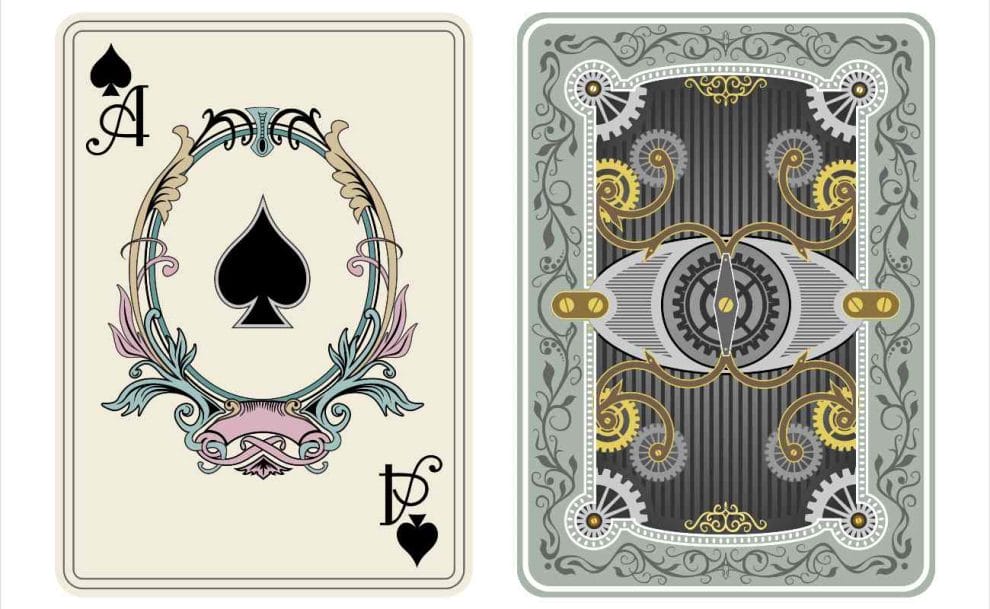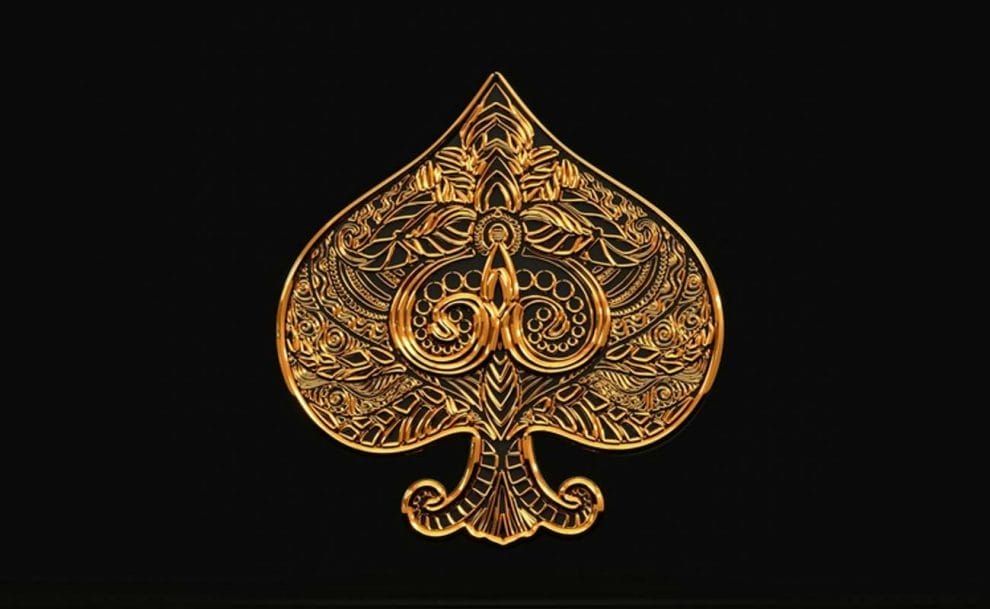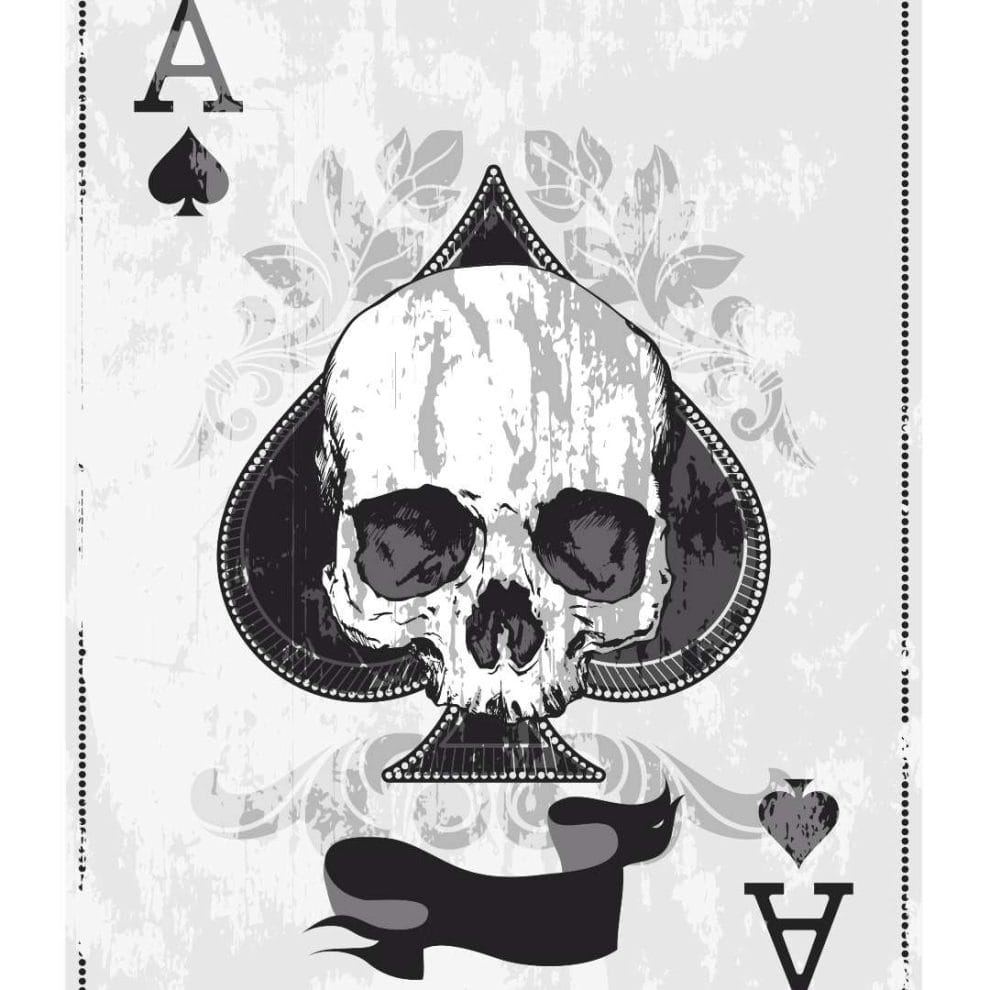
Why is the Ace of spades special? This particular card shares the spotlight with the three other aces in online poker and other card games, so why does it have such an infamous reputation? Is the card’s place at the top of the hierarchy of cards in some countries the reason? Or is there a darker and more twisted story waiting to be told? It seems most likely that it’s the ace of spades’ reputation as a “death card” that has played a significant role in it staying so popular in modern culture.
Learn about the history of the death card, all the way from medieval Europe to the present, and how this has helped it become such a cultural icon that stands out amongst other playing cards and the reputation they have today.
What Does the Ace of Spades Represent? How a Playing Card Became a Symbol of Death
Though many people might chalk it up to superstition, there are actually multiple connections between the ace of spades cards and death. The first of these can be traced back to medieval Europe when blacksmiths stamped their weaponry and armor with the ace of spades as a mark of quality. This link with death would become the first of many.
It is said that in life, only two things are certain: death and taxes. And so, it should come as no surprise that following its initial connection with death, the ace of spades would also become associated with its twin certainty: tax. Once playing cards had become taxable, King James I, and later Queen Anne, enforced a law according to which the ace of spades card had to bear the insignia of the relevant printing house. The stamp was proof that the “stamp duty” or tax had been paid.
However, even this seemingly innocent connection to taxes soon turned an uncanny, dark corner. Because the signing process was so expensive and time-consuming, people began to fake the stamp in an attempt to decrease costs. Creating counterfeit cards became a capital offense, one that could lead to death by hanging. Eventually, a great many paid the ultimate price after being caught out creating counterfeit cards. This dark reputation followed the card into the 18th century when pirates started to use it as a threatening symbol to scare traitors and informers.
Some people believed the spade itself represented the tool used to dig graves. Others believed the card represented the winter Week of Yule. This time of the year was the hardest and darkest, with its ever-looming threats of famine and cold. But even that marked only another moment in the card’s historical association with death.
The Ace of Spades in War

The Ace of Spades in World War I and World War II
In World War II, the ace of spades took on a larger, more encompassing symbolic meaning. During World War I, the symbol had already been used by the British Army as part of their regimental insignia. During World War II, the 101st Airborne Division decided to use card suits to identify different regiments. These symbols were painted on the sides of soldiers’ helmets to make it easier for them to identify their regiment when they were gliding, parachuting, or worse, got lost.
The 506th Parachute Infantry Regiment, a part of the famous “Screaming Eagles” unit, was given the ace of spades as their mark. It became a symbol of luck for the regiment, and today the card is still used to commemorate the legacy of the 101st Airborne Division’s triumph in World War II.
The Ace of Spades in the Vietnam War
Even though the card had been a symbol of honor and luck in World War II, the war in Vietnam reminded people of its connection with death. For soldiers in the US military, the ace of spades was a death card.
US troops believed that the ace of spades was a frightening and evil omen for Viet Cong soldiers. To intimidate them, the troops carried the cards to show the enemy that wherever they went, death would soon follow. This superstition was a myth that dated back to when the French occupied the region. When the French told fortunes with a deck of cards, the different suits had different meanings. The spade suit represented death and bad fortune.
Though the superstition was based on biases and misconceptions, this didn’t stop the Americans from turning it into a genuinely terrifying symbol. The soldiers left the ace of spades on the bodies of Vietnamese soldiers so that it was often the last thing a soldier saw before he died.
The American “Secret Weapon” in the Vietnam War
In Vietnam, the ace of spades meant more to the American troops than it did to the Viet Cong soldiers or civilians. The card became a powerful motivating emblem for the Americans and helped to boost their morale. The Americans believed in the power and importance of the death card so much that they requested decks from the United States Playing Card Company, which consisted only of the ace of spades. The company sent thousands of these special death card decks to US soldiers free of charge and boldly titled them the “Secret Weapon.’ The cards were stuck onto helmets and scattered during village raids as a threatening anti-peace sign, cementing this as a US military death card during the war.
The Meaning of the Spade of Death Today

The popular Motörhead track “The Ace of Spades” that propelled the band to fame is proof that the death card has become an iconic symbol in pop culture. With its connotations of war, danger, and death, the card is often used in rock ‘n’ roll and motorcycle culture. You’ll see it as a menacing tattoo dressed up with skulls, flames, or the Grim Reaper himself.
The card has come to represent an important part of American history and modern culture. In 2003, the US issued a deck of most-wanted Iraqi playing cards to soldiers, and each card had on it the picture of a wanted Iraqi official. The infamous Saddam Hussein was given the nickname “Ace of Spades” since that was the card that had his face on it.
The ace of spades continues to carry an ominous and dark air in pop culture thanks to history and even modern superstitions and conspiracy theories. Still, just as in World Wars I and II, the card can become a symbol of hope and triumph again. In tarot, the ace in each suit is believed to be a good omen, bringing with it hope of a new beginning.
Unleash Your Ace in the Hole with Borgata Online
If aces also represent new beginnings, why not start your online gaming journey with Borgata Online? The Borgata live dealer online casino has hundreds of classic table games such as blackjack, poker, and baccarat with real professional croupiers. The mobile-optimized platform also offers thousands of online slots, one of the biggest sportsbooks, as well as fun and entertaining virtual bingo. You can also find thousands of resources to improve your game, as well as interesting knowledge on a variety of other topics, on the Borgata Online blog, including content on how to dominate poker cash games, Register to browse our catalog and start playing our great library of gambling games.
